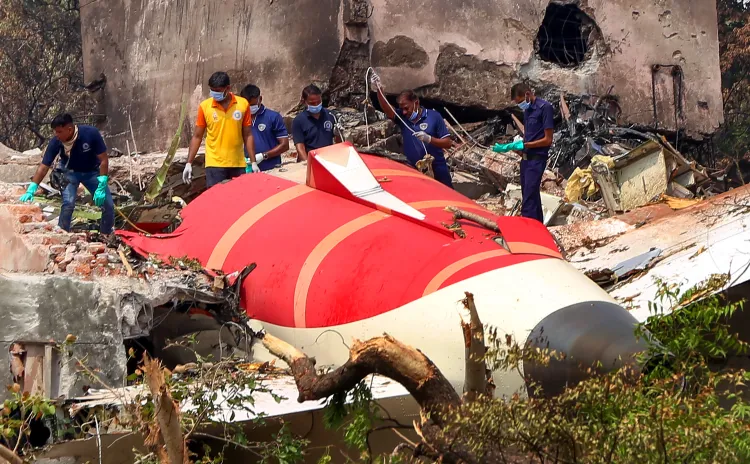What Caused the Air India Crash? Both Engines Shut Down After Fuel Control Switches Shifted

Synopsis
Key Takeaways
- Fuel control switches shifted to CUTOFF leading to engine failure.
- Tragic loss of nearly 270 lives.
- Confusion evident in cockpit communications.
- Ongoing investigation to uncover further details.
- Air India cooperates with authorities.
New Delhi, July 12 (NationPress) An investigation into the Air India Boeing 787-8 incident revealed that the engine fuel control switches abruptly shifted from ‘RUN’ to ‘CUTOFF’ just three seconds post takeoff, resulting in the aircraft crashing a mere 34 seconds after departing from Ahmedabad on June 12. This information comes from the preliminary report issued by the Aircraft Accident Investigation Bureau (AAIB) on Saturday.
Both fuel control switches that supply fuel to the engines of Air India flight 171 were quickly turned off, leading to a complete engine shutdown. The cockpit voice recorder captured a conversation where one pilot questioned the other about cutting off the fuel, to which the response was a denial.
The report states, “Fuel switches for engines 1 and 2 were swiftly returned to ‘Run’. However, the EGTs for both engines increased, indicating attempts to relight. Confusion was evident in the cockpit, with one pilot asking, ‘Why did you cut off?’ and the other replying, ‘I did not do so,’ pointing to potential miscommunication.
Co-pilot Clive Kundar was at the controls, while Sumeet Sabharwal served as the pilot monitoring. Sabharwal boasted around 8,600 hours of experience on the Boeing 787, whereas Kundar had logged over 1,100 hours. The report noted that both pilots had sufficient rest before the flight.
Spanning 15 pages, the report indicated that the flight lasted approximately 30 seconds from takeoff to crash. At this time, there are no specific recommendations for operators of Boeing 787-8 aircraft or GE GEnx-1B engines.
The preliminary investigation also highlighted that the US Federal Aviation Administration (FAA) had issued a Special Airworthiness Information Bulletin (SAIB) in 2018 regarding “potential disengagement of the fuel control switch locking feature.” Air India, however, did not perform the inspection as the SAIB was advisory, not mandatory.
“All relevant Airworthiness Directives and Alert Service Bulletins were complied with for both the aircraft and engines,” the report clarified. There were no adverse weather conditions affecting the flight, and the aircraft’s takeoff weight was within acceptable limits.
Ongoing investigations will delve deeper, examining more evidence, records, and information being gathered from various stakeholders,” the preliminary report stated.
In a statement on X following the report's release, Air India expressed its condolences: “We continue to mourn the loss and are fully committed to providing support during this difficult time. Air India is collaborating closely with stakeholders, including regulators.”
The tragic incident claimed nearly 270 lives — 241 of the 242 individuals on board, along with others on the ground.










